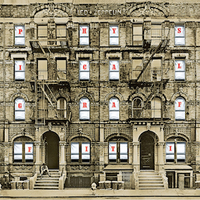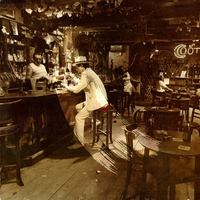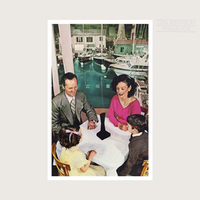40. Trampled Under Foot (Physical Graffiti, 1975)
Physical Graffiti produced not only the Led Zeppelin anthems Kashmir and Houses Of The Holy, but it also the delightfully upbeat, out-of-character Trampled Underfoot. The keyboard-orientated theme provided a whole new groove for the band, which stunned fans who heard it being played at the 1975 Earls Court concerts. It had the kind of relentlessly driving rhythm that no one wanted to stop. John Paul Jones set up the electric piano riff and Bonham supplied the surging backbeat. Although Stevie Wonder may have provided the inspiration, the attack was certainly all Zeppelin. Trampled Underfoot emerged from an informal jam session, and rapidly became one of Plant’s favourite tracks. The lyrics are said to be based on Robert Johnson’s 1936 vintage Terraplane Blues. The song uses motor cars as a sexual metaphor – 'Mama, let me pump your gas'. Trampled was released as another US single and reached number 38 in the Billboard chart in May 1975.
39. In The Light (Physical Graffiti, 1975)
Once described by Jimmy Page as the follow-up to Stairway To Heaven, this Physical Graffiti standout had its origins in a breezy rehearsal ditty called In The Morning. The end result is a far weightier proposition, John Paul Jones’ foreboding, drone-like synth intro marking the start of a rollercoaster eight-minute journey where nocturnal introspection ('And If you feel like you can’t go on / And your will’s sinking low') and nerve-shredding heavy riffing eventually give way, courtesy of Jones' breezy organ part and Page’s glissando guitars, to a gorgeously sunlit finale. By turns unsettling, eerie and ultimately euphoric, it's a prismatic gem – not so much rock, as marble.
38. In The Evening (In Through The Out Door, 1979)
Jimmy Page may have taken a back seat to Robert Plant and John Paul Jones in the recording of Zeppelin’s final studio album, In Through The Out Door, but on this strutting opening track, he stamps his authority on proceedings. The slamming door effect of the solo is yet another innovation. Washed up by 1979? Not on this evidence.
37. Nobody's Fault But Mine (Presence, 1976)
Credited to Page and Plant on March 1976’s Presence – despite the fact Blind Willie Johnson wrote the lyrics in 1927 – this spine-tingling blues belter is an example of rock’n’roll grandstanding at its finest. Over an air-tight rhythm section Page and Plant trade the spotlight, the former’s fire-and-brimstone riffing matched every inch of the way by the latter’s vocal gymnastics, a demonic harmonica solo from Plant upping the ante further still. Lyrically, it subverts the song’s original religious theme, invoking Robert Johnson's Hellhound On My Trail with the lines: 'Got a monkey on my back / Gonna change my ways tonight'. An allusion to Page’s burgeoning heroin habit or their own notoriety as rock's debauched ruling class? Hard to say, but with the punk armies amassing to dethrone them, this is the sound of Zep at both their murkiest and most magisterial.
36. D'yer Mak'er (Houses Of The Holy, 1973)
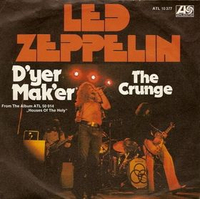
The title might have been filched from an old music-hall joke (‘My wife’s gone to the West Indies…’ etc), but this Houses Of The Holy track was originally Plant’s attempt at a 50s doo-wop pastiche. He was keen to release the reggae-tinged track as a single – Atlantic even distributed promo copies to DJs – but not everyone was so keen on it. John Paul Jones was vocal in his derision of the track. “A real love it or hate it track, which I still love,” producer Eddie Kramer told Classic Rock in 2017. “Those huge drums that kick in at the start are like bombs going off. What’s amazing, though, is how John Bonham keeps the bombs going off while playing this extraordinarily subtle and brilliant rhythm. Robert’s voice is also superb, kind of a meeting of doo-wop and reggae. All credit must also go to Jonesy, whose bass takes the reggae rhythm to a whole different place. I could go on about this one for hours. Suffice to say nothing like it had ever really been attempted by a rock band before, and it caused a lot of controversy when people first heard it.”
35. What Is And What Should Never Be (Led Zeppelin II, 1969)
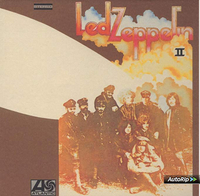
The initial recording sessions for what would become Led Zeppelin II saw the band working on What Is And What Should Never Be, a drifting, melodic song that would highlight Robert Plant’s growing maturity as a lyricist. For all their hard rock legend it’s diversity that has kept Led Zeppelin’s name in lights – the psychedelic-metal-prog riffs here are almost as astounding as Plant’s vocal; no wonder he keeps this one close when he plays his solo shows these days.
34. Misty Mountain Hop (Led Zeppelin IV, 1971)
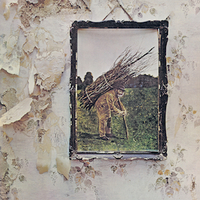
An uplifting outing, with John Paul Jones’ electric piano providing the central riff motif the song revolves around. John Bonham makes an exemplary contribution, with some riotous fills. Plant meanwhile is back on the hippie trail telling the tale of being busted in the park with ‘crowds of people sittin' on the grass with flowers in their hair – hey boy do you wanna score?’
33. Tangerine (Led Zeppelin III, 1970)
The Jimmy Page composed Tangerine was first recorded in April 1968 at the final Yardbirds recording session under the title Knowing That I’m Losing You. There were also several songs begun there that would find a home on their next four albums, including the bare bones of Stairway To Heaven, Over The Hills And Far Away, Down By The Seaside, The Rover, Poor Tom and (similarly misspelled) Bron-Y-Aur. Tangerine, with its nicely low-key, deliberate-mistake intro, was eventually reborn in Wales as part of the Led Zeppelin III sessions, as a country-tinged, Neil Young-inspired dirge.
32. The Lemon Song (Led Zeppelin II, 1969)
Recorded virtually live at Mystic Studios in Los Angeles in May 1969, during their second US tour, this full-blooded reboot of Howlin’ Wolf’s Killing Floor feels like the sound of pop’s tectonic plates shifting. With Jones' tightrope-taut bassline providing a precarious counterbalance for Page’s savage lead lines and Plant’s libidinous howl, The Lemon Song shimmers with West Coast sleaze, the singer’s not-so subtle appropriation of Robert Johnson’s sexually charged lyric 'You can squeeze my lemon 'til the juice runs down my leg' enough to send the prudish into freefall. The era of Whole Lotta Love – during which Plant would later reuse the phrase – had been set in motion.
31. Gallows Pole (Led Zeppelin III, 1970)
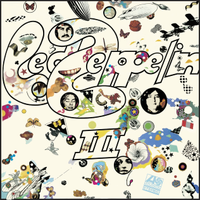
Based on a traditional folk tune popularised by Leadbelly – Page first heard it performed by Californian folk singer Fred Gerlach – Gallows Pole recounts the story of a man pleading for his execution to be delayed until his friends arrive with the hope of a possible reprieve. From such ancient fare Zep conjure up a sizzling down-home boogie, Page’s layered instruments – banjo, acoustic, 12-string and electric guitars – and Jones’ mandolin and bass conjuring up a medieval menace before Bonzo wades in and Plant ramps up the tension until a frantic call and response finale. Swinging, in every sense.
Classic Rock Newsletter
Sign up below to get the latest from Classic Rock, plus exclusive special offers, direct to your inbox!
